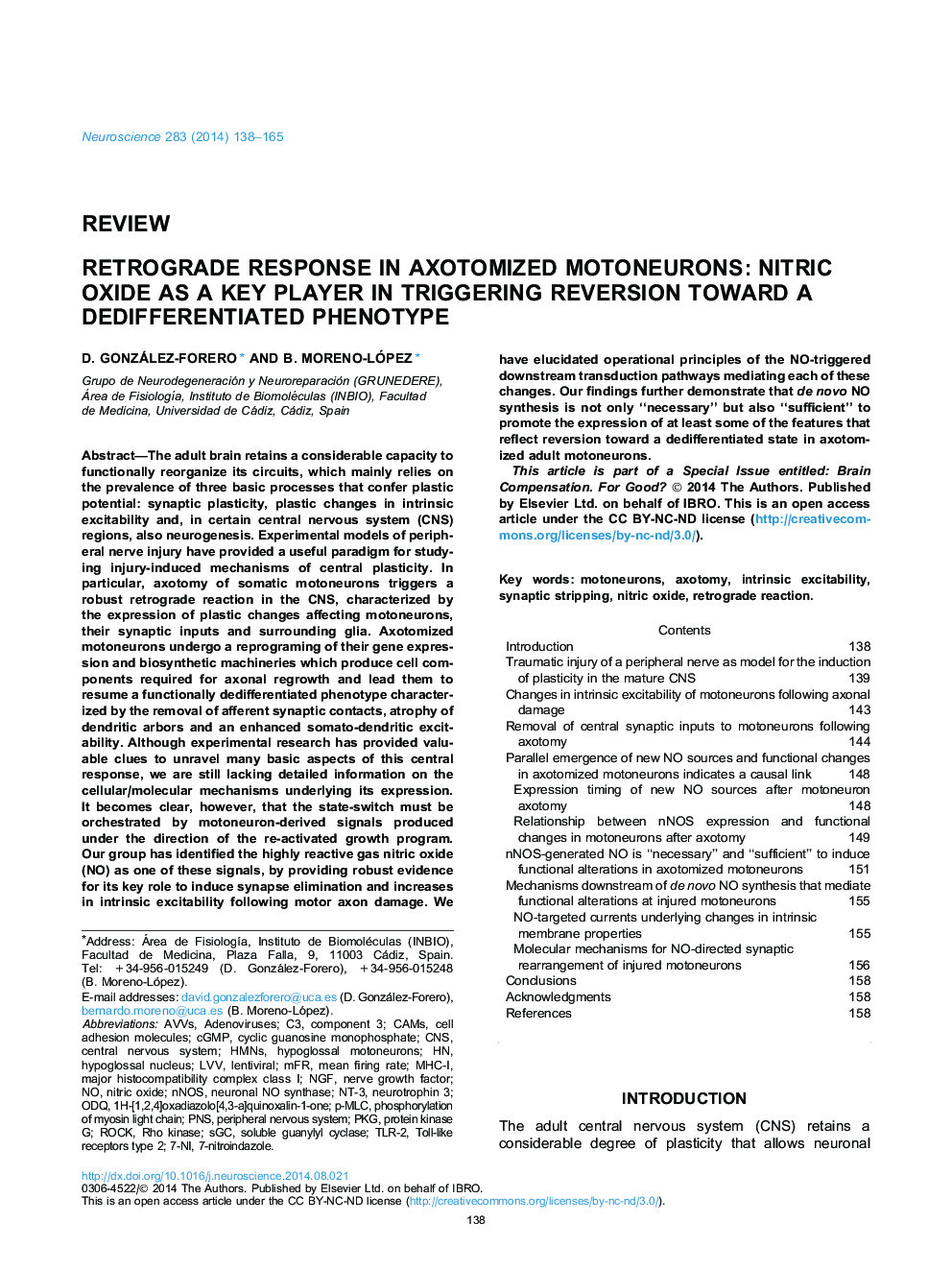| کد مقاله | کد نشریه | سال انتشار | مقاله انگلیسی | نسخه تمام متن |
|---|---|---|---|---|
| 6272814 | 1614793 | 2014 | 28 صفحه PDF | دانلود رایگان |
عنوان انگلیسی مقاله ISI
Retrograde response in axotomized motoneurons: Nitric oxide as a key player in triggering reversion toward a dedifferentiated phenotype
دانلود مقاله + سفارش ترجمه
دانلود مقاله ISI انگلیسی
رایگان برای ایرانیان
کلمات کلیدی
cGMPNGFMean firing ratenNOSLVVMFRODQNT-3lentiviralMHC-IP-MLC1H-[1,2,4]oxadiazolo[4,3-a]quinoxalin-1-one - 1H- [1،2،4] اکسیدیاازولو [4،3-a] کینوکسالین-1-یونCAMs - CAM هاAdenoviruses - آدنویروس هاcomponent 3 - جزء 3CNS - دستگاه عصبی مرکزیcentral nervous system - سیستم عصبی مرکزیnerve growth factor - فاکتور رشد عصبHypoglossal motoneurons - موترونورون هیپوگلوزالیcell adhesion molecules - مولکول های چسبندگی سلولیcyclic guanosine monophosphate - مونوفسفات گوانوزین چرخه ایNeurotrophin 3 - نوروتروفین 3Neuronal NO synthase - نیاسین سنتاز NONitric oxide - نیتریک اکسیدhypoglossal nucleus - هسته hypoglossalMajor histocompatibility complex class I - کلاس I پیچیده بافت سازگاری عمده
موضوعات مرتبط
علوم زیستی و بیوفناوری
علم عصب شناسی
علوم اعصاب (عمومی)
پیش نمایش صفحه اول مقاله

چکیده انگلیسی
The adult brain retains a considerable capacity to functionally reorganize its circuits, which mainly relies on the prevalence of three basic processes that confer plastic potential: synaptic plasticity, plastic changes in intrinsic excitability and, in certain central nervous system (CNS) regions, also neurogenesis. Experimental models of peripheral nerve injury have provided a useful paradigm for studying injury-induced mechanisms of central plasticity. In particular, axotomy of somatic motoneurons triggers a robust retrograde reaction in the CNS, characterized by the expression of plastic changes affecting motoneurons, their synaptic inputs and surrounding glia. Axotomized motoneurons undergo a reprograming of their gene expression and biosynthetic machineries which produce cell components required for axonal regrowth and lead them to resume a functionally dedifferentiated phenotype characterized by the removal of afferent synaptic contacts, atrophy of dendritic arbors and an enhanced somato-dendritic excitability. Although experimental research has provided valuable clues to unravel many basic aspects of this central response, we are still lacking detailed information on the cellular/molecular mechanisms underlying its expression. It becomes clear, however, that the state-switch must be orchestrated by motoneuron-derived signals produced under the direction of the re-activated growth program. Our group has identified the highly reactive gas nitric oxide (NO) as one of these signals, by providing robust evidence for its key role to induce synapse elimination and increases in intrinsic excitability following motor axon damage. We have elucidated operational principles of the NO-triggered downstream transduction pathways mediating each of these changes. Our findings further demonstrate that de novo NO synthesis is not only “necessary” but also “sufficient” to promote the expression of at least some of the features that reflect reversion toward a dedifferentiated state in axotomized adult motoneurons.
ناشر
Database: Elsevier - ScienceDirect (ساینس دایرکت)
Journal: Neuroscience - Volume 283, 26 December 2014, Pages 138-165
Journal: Neuroscience - Volume 283, 26 December 2014, Pages 138-165
نویسندگان
D. González-Forero, B. Moreno-López,